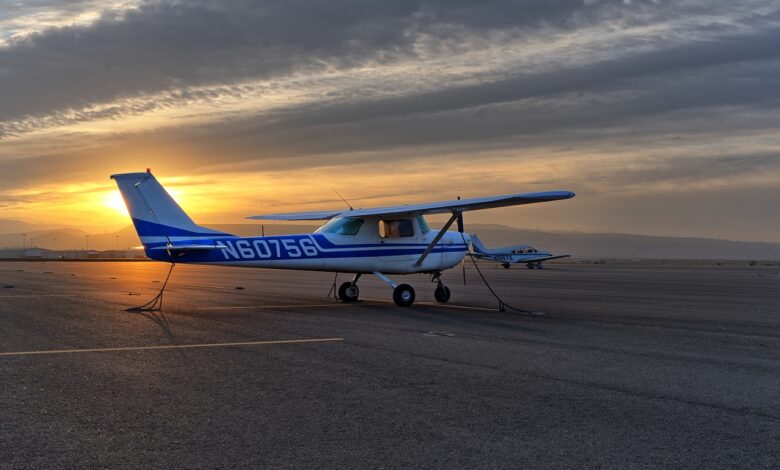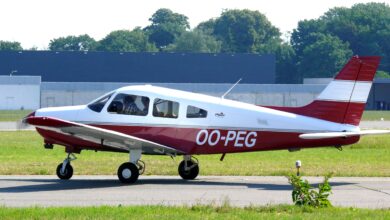Cessna 150 vs Cessna 152

Hey, aviation enthusiasts! Ever found yourself sipping a cup of coffee and pondering the timeless debate between the Cessna 150 and the Cessna 152? You’re not alone! These two birds are iconic in the world of aviation, and the discussion about which one reigns supreme has been ongoing for years. Buckle up, because today, we’re diving deep into the characteristics, histories, and unique attributes of these two legendary aircraft!
A Historical Wing-Beat
Before we delve into the nitty-gritty differences between the two, let’s take a quick flight down memory lane.
The Cessna 150
Introduced in the late 1950s, the Cessna 150 soared into the market as a replacement for the Cessna 140. From the onset, this two-seater became a fan favorite. Its role was not only as a personal chariot in the skies but also as a primary trainer for many aspiring pilots. With over 23,000 units built, its popularity is undeniable.
The Cessna 152
Fast forward to the mid-1970s, and the Cessna 152 takes its maiden flight. Designed as a direct evolution of the 150, this bird was Cessna’s response to the feedback they’d received from 150 owners and trainers alike. It packed enhancements in various departments, making it an equally beloved member of the Cessna family.
Powering Through: Performance & Specs
Now, let’s talk about what’s under the hood (or rather, the cowl!).
Cessna 150
Powering this classic is the Continental O-200 engine, producing about 100 horsepower. With a cruise speed of around 107 knots and a range nearing 400 nautical miles, it’s quite the performer for its class.
Cessna 152
Enter the 152, powered by the Lycoming O-235, also boasting 110 horsepower. While the horsepower difference might seem minor on paper, pilots often report that the 152 feels peppier and more responsive. It also gets a slight bump in cruise speed and range, further establishing its evolution from the 150.
Aviator Comfort: Cabin & Controls
It’s not just about how these aircraft perform in the sky, but also how they treat their pilots and passengers on the inside.
Cessna 150
The 150 provides a simple, no-frills cockpit, reflecting the era of its design. Clear analog gauges, basic avionics, and a tried-and-true control yoke give it a nostalgic feel. And while the space might be cozy for larger pilots and passengers, it offers a genuine, vintage flying experience.
Cessna 152
The 152 offers a similar cabin layout but with a few tweaks for enhanced comfort. The seats are slightly improved, and there’s a noticeable reduction in cabin noise. Plus, Cessna introduced modifications in avionics over the years, making the 152 a touch more modern.
Maintenance & Reliability
Any seasoned aviator knows that an aircraft’s value isn’t just in its performance but also in its upkeep.
Cessna 150
One of the compelling selling points for the 150 is its reliability. Its Continental engine has a reputation for being robust, and parts are generally available due to the aircraft’s popularity. However, as with any older machine, certain components might be harder to come by as time goes on.
Cessna 152
The 152, with its Lycoming engine, also shines in the reliability department. Given that it’s a newer model, many parts are easier to find, making it a favorite among flight schools and owners who want fewer maintenance headaches.
And the Winner Is…
Truth be told, declaring a clear winner between the Cessna 150 and 152 isn’t easy. Both have their unique strengths and quirks. The 150 offers a genuine connection to aviation’s golden era, while the 152 provides a refined version with subtle improvements. It ultimately boils down to personal preference.
Are you an old soul seeking a classic flight experience? The 150 might be your bird. But if you’re after a more modern touch with a hint of nostalgia, the 152 might just be calling your name.
Regardless of where you land in this debate, one thing is certain: both these aircraft have secured their spots in aviation history, leaving legacies that will continue to inspire and captivate for generations to come.
Safe flying, aviators! And remember, whether you’re in a 150 or a 152, the skies are always waiting for your next adventure.



